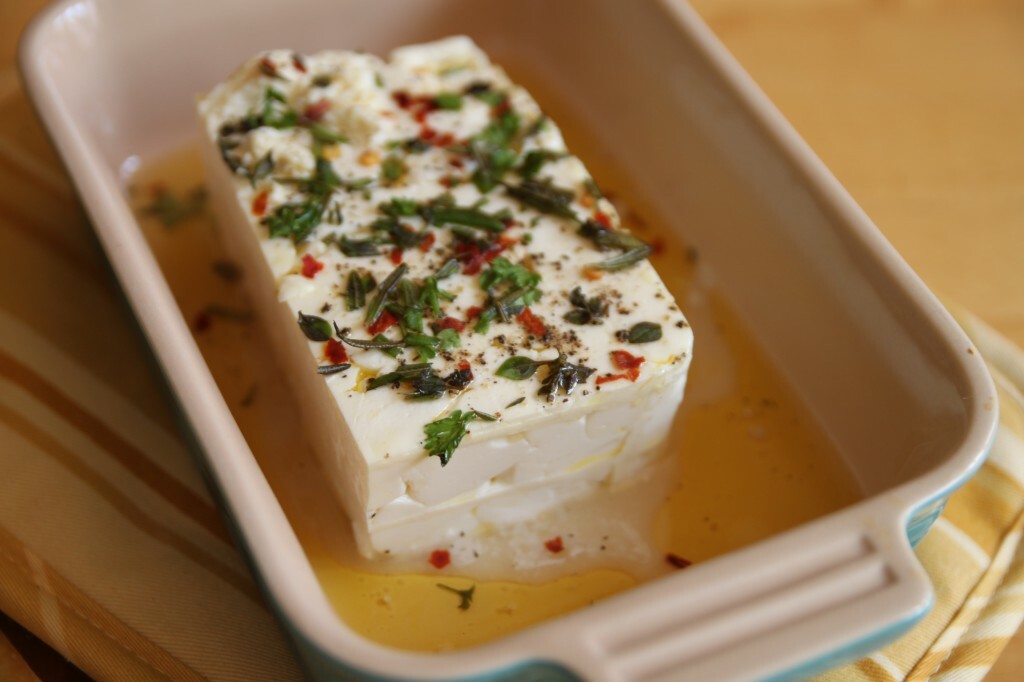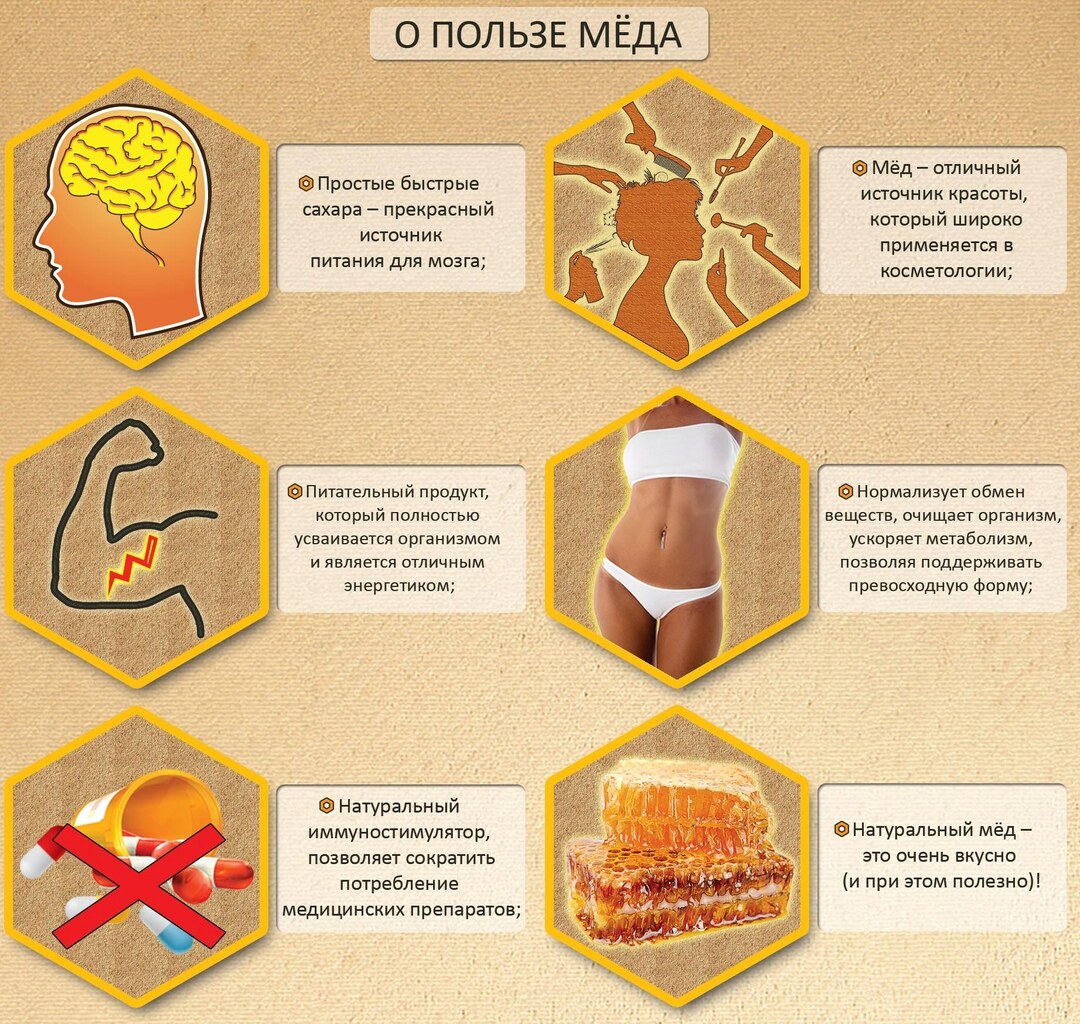How much salt should I eat per day: WHO research data and recommendations
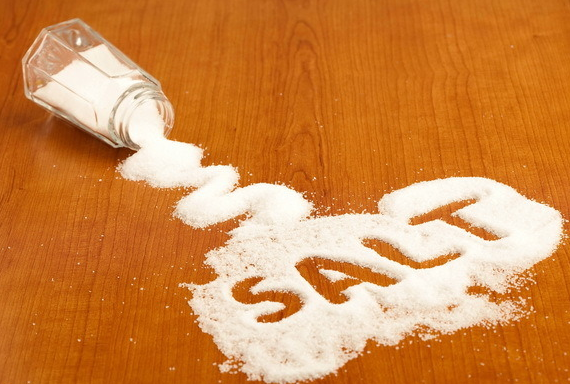
This white powder in ancient Rome was presented as a sign of a special friendly disposition, in the Middle Ages it performed the function of money and was considered a symbol of wealth.Because of him riots rose and wars began, they were protected from evil spirits and sprinkled with newlyweds, protecting them from infertility.In search of him, people wandered from country to country, they killed and sold him for slavery, and sometimes a pair of "miraculous crystals" returned life to the dying man.
We are talking about sodium chloride - the usual salt, without which we can not even imagine our diet.Is salt useful or harmful?Why can not a person live by completely giving up salt?How much salt do you need per day, so that there is no harm to your health?Let's look for answers to these questions together.
Contents: History of salt Objective need for salt use International research data Studies of the American Association of Cardiologists WHO recommendationsWhere did the habit of adding
salt come from? The custom of rubbing food with some dried herbs, roots, and leaves arose from ancient people who discovered, That the taste of such food is significantly improved, and the shelf life of products, especially meat, is increasing.Somewhat later, our ancestors paid attention to the white powder, which was on the stones near lakes or seas.It is not excluded that for the first time interest in them arose when watching animals that gladly licked white stones.
Some people did not know the salt for a long time.In the Odyssey of Homer there are lines:
"Wander. .. until you come to the land of mortals that the seas do not know and have never tasted food flavored with salt. .."
Indians of North America did not recognize salt for a long time in any of its qualities.The well-known scholar of the life of this people, Schulz wrote in his book:
"In those days blackfoots did not use salt, they could not stand it and called it" i-tsyk-si-pok-ui "(burns like fire)."
 Over time, salt began to be consumed in a crushed form with food, people learned to extract it on their own.Salt as a commodity for exchange and sale began to spread over long distances, even to places where it was not.It has become a value, especially in hot countries.Along with spicy seasonings, ancient doctors began to appreciate salt not only for their taste qualities, but also to use it for the prevention and treatment of infectious diseases.Hence the love of southerners to acute and salty food probably went.
Over time, salt began to be consumed in a crushed form with food, people learned to extract it on their own.Salt as a commodity for exchange and sale began to spread over long distances, even to places where it was not.It has become a value, especially in hot countries.Along with spicy seasonings, ancient doctors began to appreciate salt not only for their taste qualities, but also to use it for the prevention and treatment of infectious diseases.Hence the love of southerners to acute and salty food probably went.
Salt has not lost its importance in our time.It is used in the preparation of food, in conservation, in the salting of vegetables, meat and fish.
Please note: today 80% of the daily dose of this product most of us are derived from semi-finished products, canned food and industrial products.And the amount of salt consumed reaches 8-15 grams of salt per day.
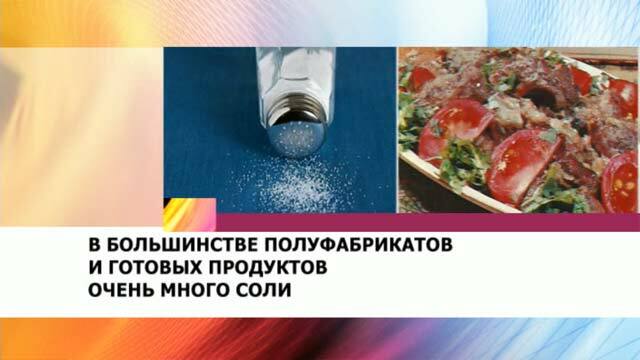
And it's no wonder that the question is whether salt is harmful or useful, excites the minds of scientists more and more.At the same time, many doctors divided into two camps: some advocate a sharp restriction of salt in the diet, the latter do not see anything terrible in the amount of salt that modern people use.
Objective need for salt and controversy surrounding its use
When talking about the harm and benefit of salt, one can not avoid the fact that in an adult human body there is about 250 g of sodium chloride.The sodium contained in the salt takes an active part in physiological processes: it maintains the water balance, transports the amino acids that are so necessary in the synthesis of protein, regulates the transfer of nerve impulses, provides the necessary level of salinity of blood and intercellular fluid.Chlorine ions are necessary for the synthesis of hydrochloric acid, which is present in gastric juice.
The human need for these elements is met through the use of foods rich in sodium chloride, and direct food salting.
The mechanism of salt starvation has been studied repeatedly in various animal experiments.In particular, it was found that without food the animal dies of exhaustion after a certain number of days.If, however, only one sodium chloride is removed from the diet, the term of death of the experimental animal depends on how abundant its further nutrition will be.
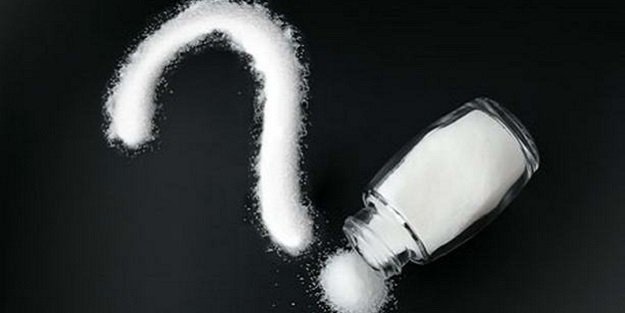 Do you think that the abundance of food will delay the term of death?By no means!Only accelerate her arrival.This is due to the fact that for the digestion of food in the stomach will require the presence of ions of chlorine and sodium, which the body is forced to take away from other tissues and cells, involuntarily leading them to exhaustion and rapid death.
Do you think that the abundance of food will delay the term of death?By no means!Only accelerate her arrival.This is due to the fact that for the digestion of food in the stomach will require the presence of ions of chlorine and sodium, which the body is forced to take away from other tissues and cells, involuntarily leading them to exhaustion and rapid death.
It would seem that everything is obvious, and further discussion about the benefits and harm of salt can and should not begin.However, for many doctors it's no secret that excessive salt intake leads to fluid retention in the human body, which in turn provokes hypertension, increases the risk of cardiovascular diseases and kidney diseases.
Remember that once said Paracelsus?
"Everything is poison, and nothing is devoid of virulence;Only one dose makes the poison invisible. "
This statement applies to salt.
Data from international studies on the salt
So how many grams of salt can one eat per day so that the harm does not exceed the benefit of this product?
In 2007, the article was published by Nigel Hawkes( The Times), in which the author cited data from fifteen years of research on the effect of reducing the amount of salt on the human body.
The results of the observation were published in the British Medical Journal, they show that people who add salt to food in a reduced quantity reduce the risk of sudden cardiac arrest and the development of transient cerebral circulation by 25%, and the quantityCases of premature death.
These discoveries are the result of the fruitful work of a group of physicians Harvard Medical School under the leadership of Nancy Cook.Scientists conducted 2 experiments - in the late 80's and early 90's of the last century.
Dr. Cook stressed that the findings of the work indicate that a decrease in the level of sodium in the body is absolutely harmless to health, moreover, it is useful for the body.The reduction was from 9.5 g to 6 g per day.
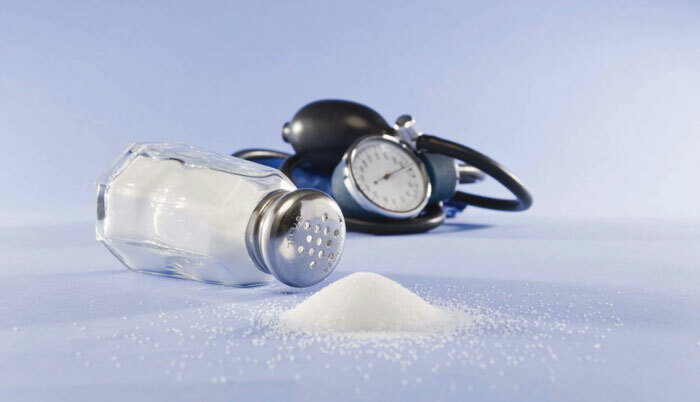 In the UK, several companies like the Food Standards Agency( FSA) set out to reduce salt by the population by 25-35%.It was at this level that the consumption of salt in Dr. Cook's experiments was limited.
In the UK, several companies like the Food Standards Agency( FSA) set out to reduce salt by the population by 25-35%.It was at this level that the consumption of salt in Dr. Cook's experiments was limited.
Salt producers, in particular Salt Manufacturers` Association, entered into a dispute with the scientists.The main complaint was that people who already had this or that degree of hypertension were involved in the experiment, and only 327 people aged 30 to 54 who limited the intake of salt were involved in the observation.The result was compared with a group of 417 people who consumed salt in the usual amount.
However, a urine sample of patients showed that the amount of sodium in it decreased by 30% in the salt-limiting group, compared to the group with a normal diet.
Physicians expected that a decrease in sodium would reduce the number of deaths from strokes by 6%, from heart disease - by 4%.But the results showed a higher level of benefit of salt restriction, although blood pressure decreased very slightly.
The benefits of reducing the amount of salt used were also spoken by G. McGregor - ProfessorGeorge`s University.He stressed that similar companies conducted in Finland also showed a decrease in the incidence of heart attacks and strokes
. Note: despite such seemingly eloquent facts, one can not categorically state that all people can eat only 6 grams of salt per day.Firstly, there were not so many people taking part in the research, which keeps the possibility of distorting the results due to the lack of careful observation and the presence of accidents.Secondly, each of us has its own susceptibility to the effects of salt.
An attempt to answer the question of whether salt is useful in large quantities and how much it can be eaten per day was also made by the journal Hypertension Research.He published in the issue of April 14, 2011 data on the study of the causes of hypertension in patients as a result of an overabundance of salt in food.According to a study from Case Western Reserve University and Kent State University, sodium chlorine changes the regulation of blood pressure and affects the change in body temperature.
The experiment consisted in measuring body temperature and pressure in patients with simple water and water containing salt.22 volunteer patients used plain water. Each hour, each of them was checked:
- blood pressure level;
- temperature of the rectum;
- minute cardiac volume;
- amount of excreted urine.
After a while the experience continued on the same technology, but with the use of salt water.
As a result, it turned out that salt water can reduce the temperature more than a simple one.The patients, insensitive to salt, also cooled more strongly, but they had stable pressure figures.Patients with greater sensitivity to salt did not show any temperature changes.
Salt food is also capable of causing hypertension and can cause cardiovascular disease in children, according to research published in the Journal of Hypertension.
 A study was conducted under the auspices of the UK Department of Health, covering 2,127 children aged 4 to 18 years.Experts who conducted the experiment, argue that every gram of sodium chloride can raise blood pressure by 0.4 mm Hg.Pillar.
A study was conducted under the auspices of the UK Department of Health, covering 2,127 children aged 4 to 18 years.Experts who conducted the experiment, argue that every gram of sodium chloride can raise blood pressure by 0.4 mm Hg.Pillar.
Doctors call on parents to check the salt content of products.Dieticians reasonably advised to reduce the level of salt load to 3 grams per day.Food containing excessive salt is harmful and provokes the development of hypertension already from childhood.As prof.Malkom L, initially such changes are not noticeable, but with age they lead to heart disease, hypertension and arrhythmias.
Food Standards Agency( FSA) - The Food Standards Agency provides advice on the need to keep salt in food products to a minimum.
For example, children under the age of 3 should not add more than 2 grams of salt per day, at the age of 6 years, the permissible amount of salt is 3 g. At 10 years, the norm can be raised to 5 g. Children under one year,And especially newborns, salt is contraindicated altogether.
Studies of the American Heart Association: arguments and counterarguments
A lot of noise has been done and an article about the harm of salt abuse of the graduate of the University of Medill-Alexandra Sifferlin, writer and producer of TIME HealthLand.
Based on the research of the AHA - American Association of Cardiology - the author points out that the salt has certain taste qualities and is needed for various types of cooking products, but its excess harms the human body.AHA cites data on the relationship between excess salt and the risk of cardiovascular disease, the development of heart attack, hypertension.At the scientific conference of this organization in 2013 it was announced that in 2010 more than 2 million people died of diseases of the cardiovascular system caused by excess of salt.
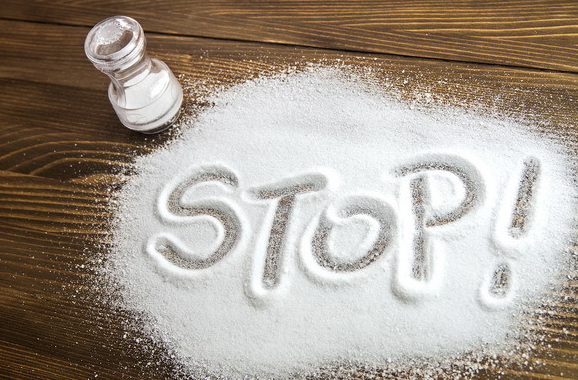 Scientists analyzed 247 surveys collected from different locations on the planet and concluded that the majority of the respondents had twice exceeded the sodium recommended by WHO( 2000 mg / day) and three times the norm of the ANA( 1500 mg/day).
Scientists analyzed 247 surveys collected from different locations on the planet and concluded that the majority of the respondents had twice exceeded the sodium recommended by WHO( 2000 mg / day) and three times the norm of the ANA( 1500 mg/day).
At the same time, analysis of 107 clinical studies showed that 84% of deaths in people caused by heart disease have a direct relationship with excess salt intake norms.Moreover, the mortality rate for this reason is much greater in countries with a low standard of living.
Participants of the ANA conference declared abuse of salt in childhood.Out of 1115 baby food products, 75% exceeded the salt content standards.
Joyce Maalouf, director of the National Center for Chronic Disease Prevention and Health Promotion, said that the less salt is in the baby's diet, the less need for it will be at an older age.
The ANA claims that the salt in food products is quite enough and the saltcellar is simply removed from its desks.
The opponent of these studies was The Salt Institute.In particular, the deputy director of this institution Morton Satin pointed out that the statistics of mortality from salt abuse by ANA is far from reliable.From his point of view, scientists have chosen the wrong statistical model.
In January 2015, the medical journal JAMAInternalMedicine, which published an article entitled "Salt Intake Not Associated with Mortality or Risk of Cardiovascular Disease, Heart Failure in Older Adults", made even more noise.It stated that food containing salt does not affect mortality from cardiovascular pathology in any way.
 The authors are confident that data on reducing salt intake in the category of elderly people is not enough.In real life, few people over 50 years of age add less than 1500 mg of sodium to their food, which is recommended by doctors.The strength of eating habits is very high.
The authors are confident that data on reducing salt intake in the category of elderly people is not enough.In real life, few people over 50 years of age add less than 1500 mg of sodium to their food, which is recommended by doctors.The strength of eating habits is very high.
Andreas P. Kalogeropoulos, MD Emory University( Atlanta), with colleagues conducted a thorough diagnosis of the dependence of salt diet and mortality from heart disease.The group of subjects was 2,642 people aged 71 to 80 years.A period of 10 years was taken into account.
During this time, 881 patients died, heart and vascular disease developed in 572 people, 398 patients had acute and chronic heart failure.
Scientists concluded that salt intake did not affect the development of this pathology.
These studies are peremptory:
- 33.8% of deaths occurred in people who consumed less than 1500 mg of sodium per day;
- 30.7% - up to 2300 mg per day;
- 35.2% - more than 2300 mg of sodium per day.
The obtained figures were formed after a thorough study of the questionnaires of people involved in the studies.
Having carefully studied all available data, it can be noted that often behind the loud results of various studies lies the banal analysis of the surveys conducted.Moreover - polls covering very small groups.And this does not exclude subjectivity in completing the questionnaires and affects the accuracy of the research.So, the issue of harm and the benefits of salt is still open.
There is still no exact figure, indicating how much you can eat a gram of salt per day to this or that person.It is undeniable that the excessive concentration of sodium in the blood leads to undesirable consequences in the form of increased pressure, the appearance of edema, the deterioration of the processes of removing excess fluid from the body and increasing the burden on the heart and blood vessels.In determining your personal standards, we can only focus on the recommendations of the World Health Organization.
WHO recommendations
According to WHO guidelines, healthy people are prescribed to consume not more than 5 grams of salt per day( approximately 2000 mg of sodium).
Member States agreed on the need to consolidate their forces in an effort to reduce salt consumption by the world's population by 2025 by 30%, which should help achieve the stated salt intake rate of less than 5 grams per day.In children, the norms of salt are even lower, they largely depend on the child's age, weight, height and level of development.
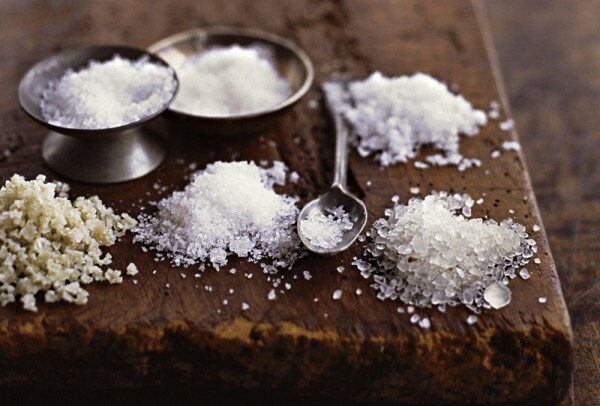 Scientists emphasize that increased intake of salt invariably leads to potassium deficiency, whose daily dose, according to the above-sounded norms, can not be less than 3.5 grams per day.WHO notes that there is a significant excess of the required level of salt consumption throughout the world.But potassium, on the contrary, is accepted by people less than the norm.
Scientists emphasize that increased intake of salt invariably leads to potassium deficiency, whose daily dose, according to the above-sounded norms, can not be less than 3.5 grams per day.WHO notes that there is a significant excess of the required level of salt consumption throughout the world.But potassium, on the contrary, is accepted by people less than the norm.
Is salt useful for the body?Undoubtedly.But the benefit is observed only if certain regulatory frameworks are observed.And, despite the presence of several points of view about the harm of salt, we still better stick to official standards.
You will receive more information about the benefits of salt, the norms of its consumption and ways to minimize the risks of developing cardiovascular diseases by viewing this video review:
Lotin Alexander, radiologist

